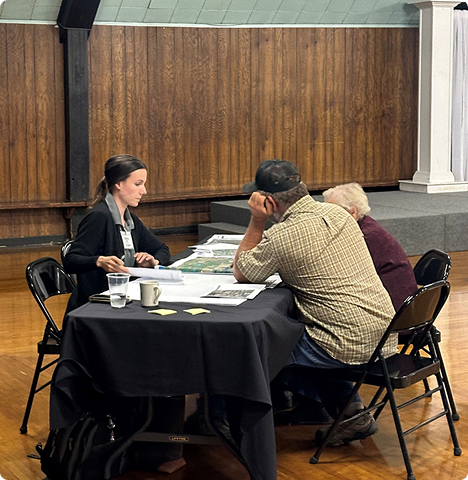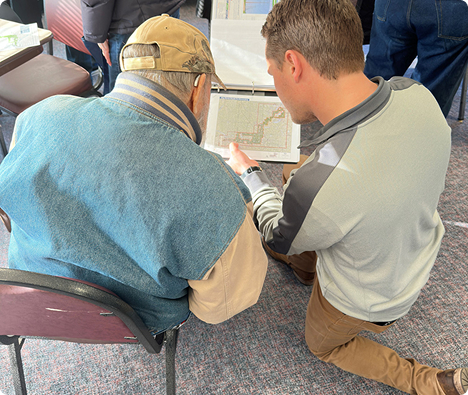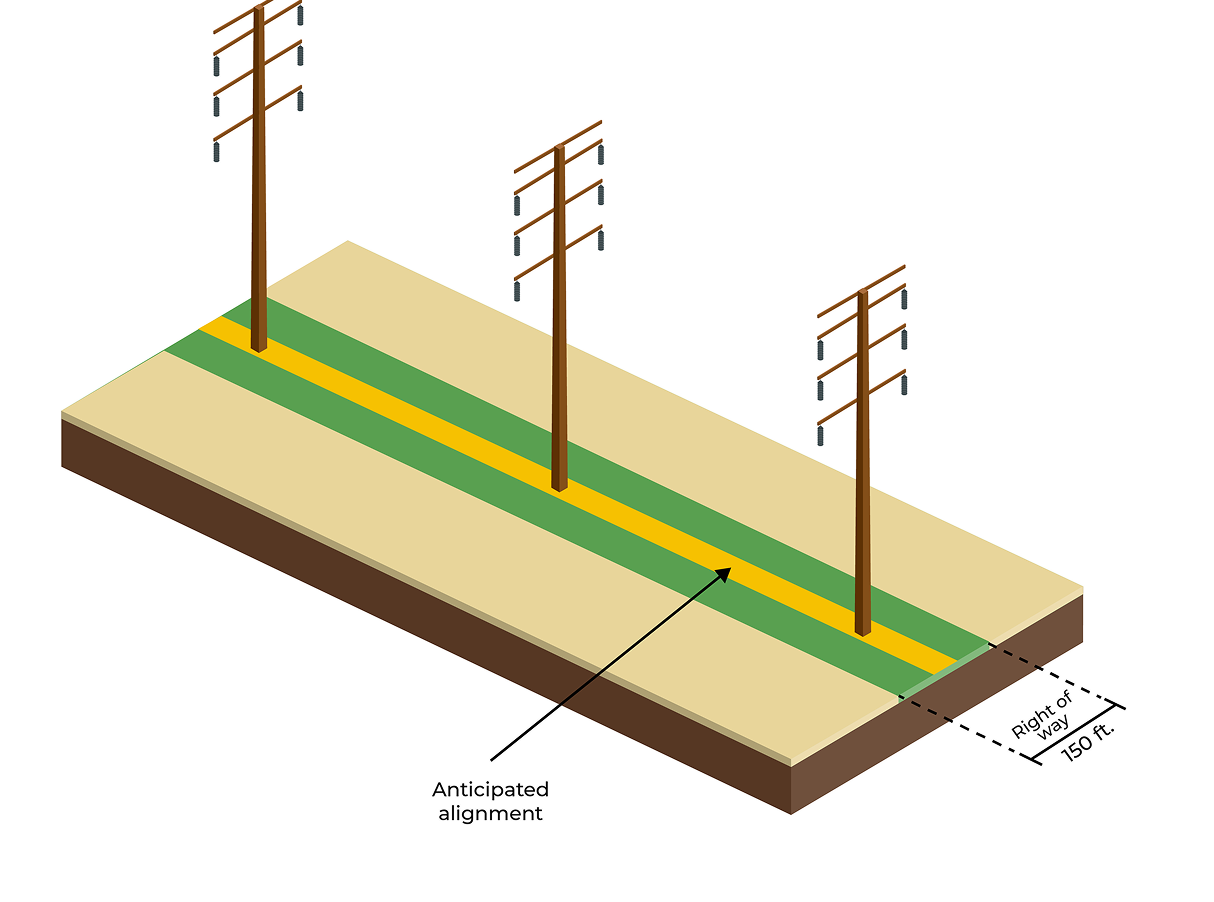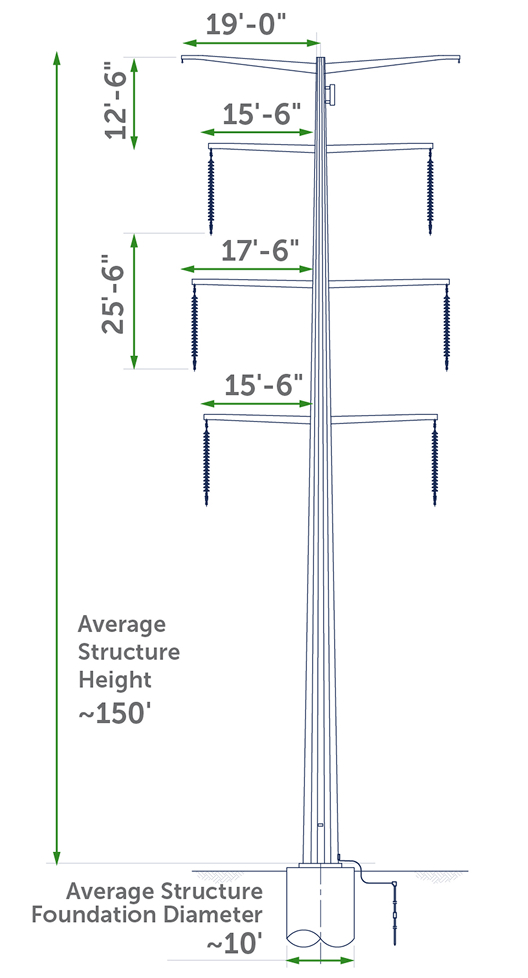Landowners
Working with landowners
A transparent process
Our team, including right-of-way (ROW) agents and/or other project representatives, will continue coordinating with landowners throughout the project development process. We're committed to keeping you involved every step of the way, and if you have questions or concerns, our project team is here to work with you!
Haven't heard from us yet?
Our team is available for a phone call or in-person meeting. Reach out via our project email address or call our hotline at (800) 598-5587 if you have questions or would like more information.
- If you are a landowner along one of the Proposed Route Options, our ROW agents will reach out to you to request right of entry (ROE) to conduct various pre-construction surveys.
- We will work with you to answer any questions and understand any concerns you may have.
- Once we receive a route permit from the Minnesota Public Utilities Commission (MN PUC), landowners along the final route will be presented with an offer—based on fair market value—for an easement agreement. We will work with landowners on the agreement(s), which will be recorded in your local county.
- We will construct, operate, and maintain the transmission line within the easement area.
Our anticipated timeline
While we're still in the early stages, construction is currently expected to begin in 2028 and may take two to four years to complete. The timeline is subject to change and all items below are pending project approval. ROW agents will continue keeping landowners informed as we move forward and get closer to construction.
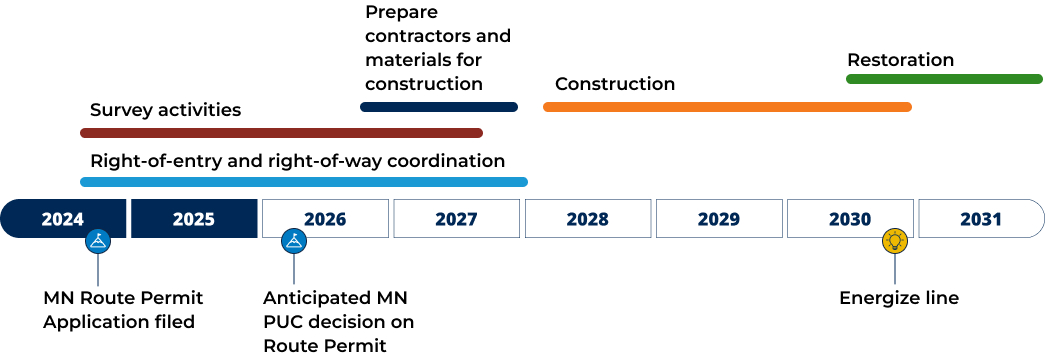
- Minnesota Route Permit Application filed - 2024
- Survey activities, right-of-entry and right-of-way coordination - 2024 to 2027
- Anticipated Minnesota Public Utilities Commission decision on Route Permit - 2026
- Prepare contractors and materials for construction - 2026 to 2027
- Construction - 2028 to 2030
- Energize line - 2030
- Restoration - 2030 to 2031
As part of our commitment to landowners, we'll work with you to restore property impacted by the project or provide compensation for damage to crops, fences, or other property. Learn more in our FAQ section.
What we've been up to
Landowner discussions
Our team has been hosting right-of-entry conversations to support required field surveys. These surveys may require access to private property to gather information about the land, including investigating areas for sensitive species, habitats, and resources, as well as other matters relevant to the project's design, construction, and operation.
Easements & structures
Otter Tail Power Company and Western Minnesota Municipal Power Agency (represented by Missouri River Energy Services) will present landowners with an easement offer. The easement is the agreement that provides the rights to access, construct, operate, and maintain the project's transmission facilities on your property. Our goal is to work closely with landowners to understand concerns and reach mutual agreements.
Typically, we'll need up to 150-foot-wide easements to safely construct, operate, and maintain the facilities. Additional temporary workspaces may also be needed for construction. Our ROW agents will work with each landowner to identify and plan for these specific needs. Learn more in our FAQ section.
Our route permit application includes a 1000' corridor, which allows us to work with landowners to determine the least impactful placement for the poles and obtain the necessary 150' easement accordingly within that corridor. This provides greater flexibility and demonstrates the importance for landowner input.
Typical monopole structures
The typical structure will be 150 feet tall. The structure type may vary across the project but primarily will be comprised of single pole, self-weathering steel with double circuit capability.
Otter Tail Power Company and Missouri River Energy Services will only install one circuit at this time.
There will be three phases of conductors and two overhead shield wires — one will be an optical ground wire (OPGW) and the other stranded steel (overhead ground wire).
These images are for illustrative purposes only and are not to scale.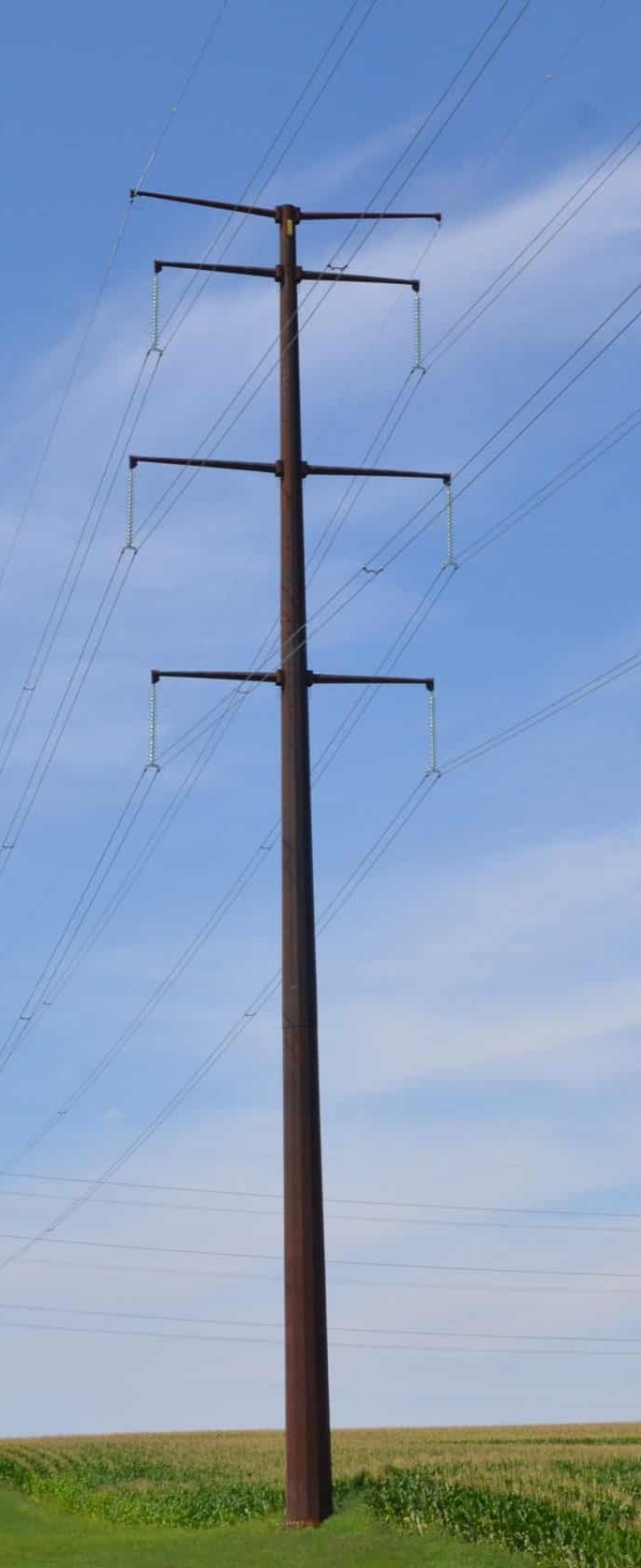
Example of a similar double-circuit structure.
Landowner resources
Frequently asked questions
A final route has not been determined by the MN PUC. If you own land in the project area or along a Proposed Route Option, you may have already heard from us. Our ROW agents are beginning to reach out to landowners, or you may have received a letter from the project team.
Easement compensation is based on market studies that reflect the fair market value of land, taking into account land type (e.g., agricultural, commercial) at different areas along the route. Once compensation for an easement is determined, and the project receives an executed agreement, landowners will receive payment from the project.
Yes. If crops, fences, or other property are damaged during construction or future maintenance activities, landowners will be compensated or we'll perform any necessary repairs. Working with the landowner on a case-by-case basis, we'll conduct a damages assessment and provide compensation.
Buildings, structures, wells, trees, other above-ground permanent objects, and flammables are examples of things not allowed within easement areas to ensure the safe construction, operation, and maintenance of the transmission facilities. Landowners may continue to use the easement property as long as the use does not threaten to interfere with or endanger the facilities or people in and around the facilities. Our ROW agents are happy to discuss what is and isn't allowed within the easement area if landowners have specific questions.
Any construction areas and temporary access roads that are not needed for ongoing operation and maintenance of the new transmission line will be restored to their previous condition, to the extent possible. The project team will work with each landowner regarding particular issues. Construction materials will also be removed.
The MN PUC requires reclamation, fertilization, and reseeding to be done according to Natural Resources Conservation Service recommendations. Any landowner requests that deviate from these recommendations will require the project to first get approval from the MN PUC.
Once the facility is operational, maintenance crews will periodically inspect, repair, and maintain the facilities. After the project installation, any subsequent maintenance that may cause crop or property damage will be settled promptly per the terms of the easement agreement.
The information on this page is intended for general purposes only and is not intended as legal advice. Circumstances may vary for each landowner and property.
Library & FAQs
Download project and permitting documents and find answers in our FAQ section.
Learn more